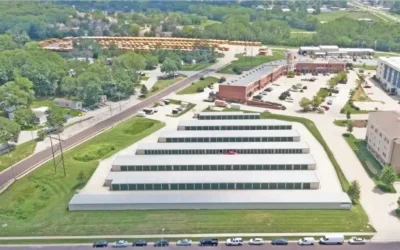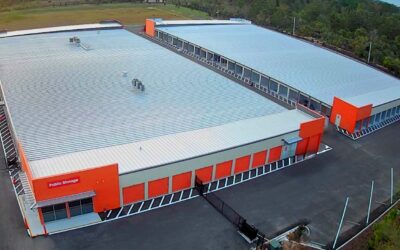The Raleigh, NC, metro area sits in the bull’s-eye when it comes to self-storage growth among the country’s major regions. But how sustainable is the self-storage boom in Raleigh?
The Raleigh area will see a 23.1 percent jump in self-storage supply, according to STR Inc., a research and analytics firm in Hendersonville, TN.
That growth rate puts Raleigh first among the self-storage industry’s 50 largest metro areas for the projected one-year rise in self-storage supply, according to STR.
The firm’s latest report indicates 1.9 million net rentable square feet will come online from February 2018 through January 2019. The new supply in Raleigh breaks down as follows:
- 13 new projects under construction
- 12 expansions of existing facilities under construction
- 4 new projects in the final planning stages
STR has identified an additional 19 projects that are on the drawing board across the region.
City of Oaks (and Storage)
By STR’s count, 168 self-storage facilities were operating in the Raleigh area as of January 2018, with Glendale, CA-based REIT Public Storage and Williamsville, NY-based REIT Life Storage among the dominant players. The vast majority of the 168 facilities are in Wake County, where the anchor city is Raleigh.
Overall, STR estimates more than 8.1 million net rentable square feet of self-storage was available in the Raleigh market in January 2018.
Meanwhile, a report from commercial real estate services company Marcus & Millichap shows that Raleigh led the country’s major metro areas in expansion of self-storage inventory from 2013 to 2018. The supply went up 37.8 percent during the five-year period, according to the report by STR.
STR says Raleigh’s self-storage boom “appears warranted,” given that the supply is growing in tandem with the area’s population, which climbed 18 percent from 2010 to 2017.
The population growth aligns with the area’s job growth. During the six-month period from September 2017 to February 2018, the Raleigh area saw year-over-year job growth of at least 2.4 percent, according to the U.S. Bureau of Labor Statistics. In February 2018, the region’s unemployment rate stood at a healthy 3.9 percent.
Hitting the peak?
Despite those robust numbers, STR questions whether the Raleigh market can absorb more facilities without experiencing a decline in occupancy rates. In November 2017, self-storage investment REIT Jernigan Capital Inc., based in Memphis, TN, placed Raleigh on its “danger” list of eight markets facing a high risk of long-term absorption challenges and “softened” rates.
Whatever the implications for absorption and occupancy rates are, self-storage expansion in a number of U.S. markets, including Raleigh, is heading for a cooling-off period.
“We expect in the not-too-distant future — whether that’s six months, 12 months, 18 months, I can’t tell you — that the pipeline will start to flatten out and also that the percentage of projects in the pipeline that make it through to completion will go down,” said Anne Hawkins, executive vice president of STR.
Nonetheless, Hawkins emphasized that the self-storage industry is driven by “trade rings” that in Raleigh would be three to five miles in diameter. This means that while the overall Raleigh market appears to be flooded with projects, some submarkets might be ripe for development.
A developer’s perspective
From Todd Amsdell’s standpoint, the oversupply issue in the Raleigh market should be treated as a red flag, not a stop sign. In other words, a developer or acquirer should be cautious in the face of a looming supply glut in the broader market, but shouldn’t necessarily be deterred.
Amsdell is president of Cleveland-based Amsdell Cos., which owns four self-storage facilities in the Raleigh area and is looking at potential acquisitions there.
In contemplating potential development projects or acquisitions, a self-storage investor must view a market on a submarket-by-submarket basis and even a street-by-street level, Amsdell said. After all, it shouldn’t make much of a difference if 10 facilities are being built in the Raleigh suburb of Morrisville when you’re checking out sites 30 miles away in Rolesville, he said.
Building or acquiring one facility in Rolesville could be all that an investor might need to succeed in the Raleigh market, Amsdell said. “We don’t go into a market and say, ‘We need to go build six or seven locations here to make this work.’”







